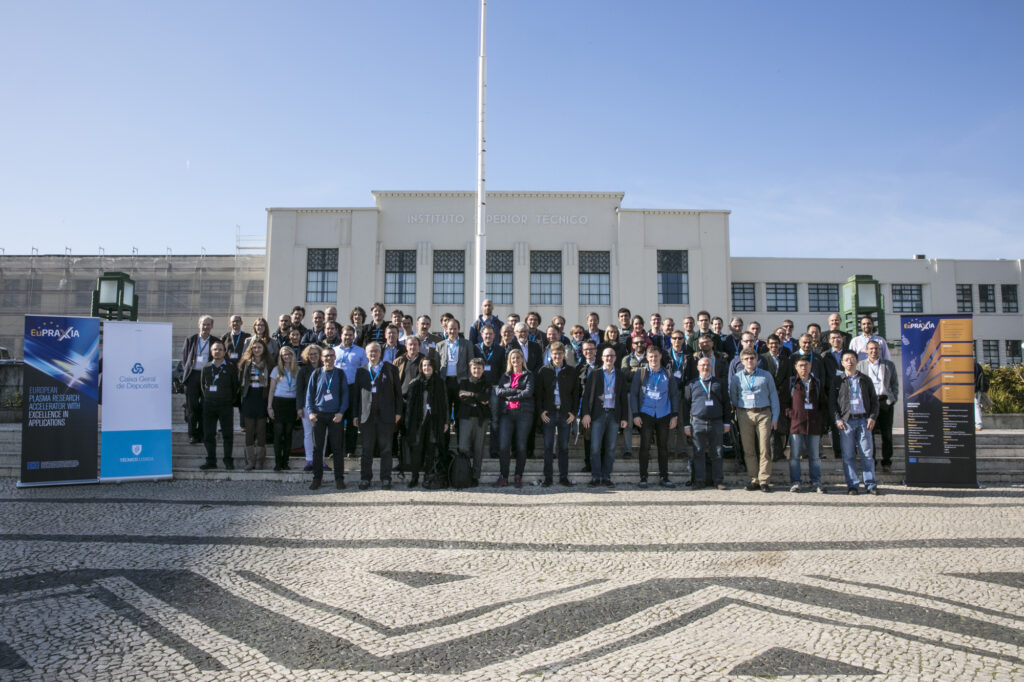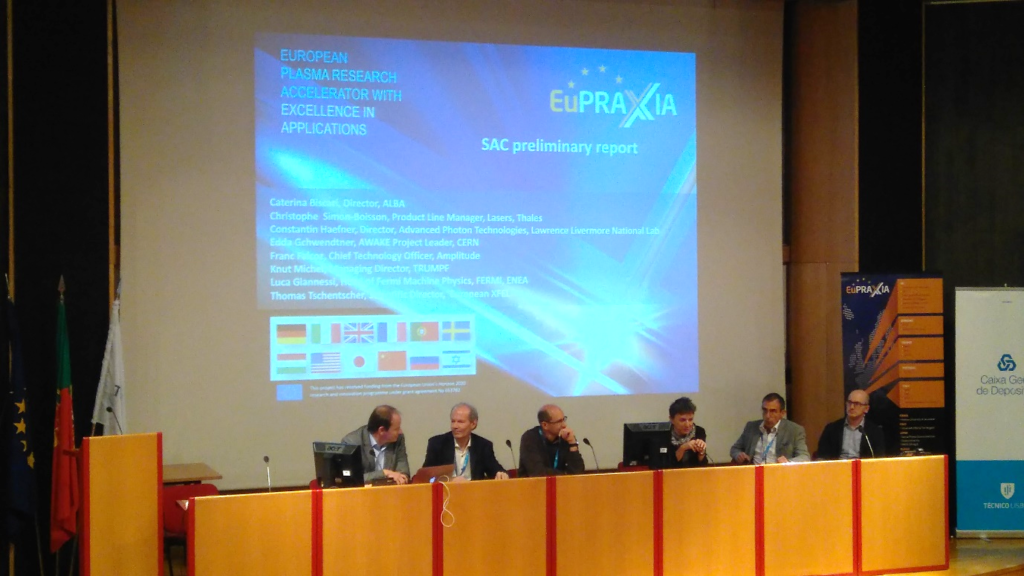The EuPRAXIA consortium, of which the University of Liverpool is one of the main partners, has held its second Yearly Meeting at the Instituto Superior Técnico in Lisbon from 20 to 24 November.
EuPRAXIA is preparing a conceptual design for the world’s first multi-GeV plasma-based accelerator with industrial beam quality, and the project has just passed the halfway mark.
The Lisbon meeting was also the occasion for the first gathering of EuPRAXIA’s Scientific Advisory Committee (SAC). The SAC, composed of eight international experts in laser and accelerator science, was in charge of assessing the status of the project and providing a set of recommendations.
Dr Ricardo Torres, member of the Cockcroft Institute, gave a summary of the contributions from University of Liverpool in the outreach and dissemination work package on behalf of EuPRAXIA. This work package was highlighted by the SAC for having been particularly successful in establishing the project within the international research community, as well as general public through an excellent communication plan.
The project has identified nine different technical scenarios to achieve the target performance of the EuPRAXIA facility, defining the baseline parameters for the operation of lasers, RF injectors, and plasma structures. Several partners are assessing the viability of the different schemes through advanced start-to-end simulations and experiments at various European facilities. The consortium has also made significant progress in developing the applications where a plasma-based accelerator, with its reduced size and cost, would have a large impact, namely as a driver for a Free Electron Laser and as a test bed for high-energy physics detectors.
EuPRAXIA is now ready to take on a second iteration of its technical design and general layout. It will start evaluating the costing for the facility construction and operation, and it will work out a detailed implementation model, with a collection of possible sites.
This project has received funding from the European Union’s Horizon 2020 research and innovation programme under grant agreement No 653782.



